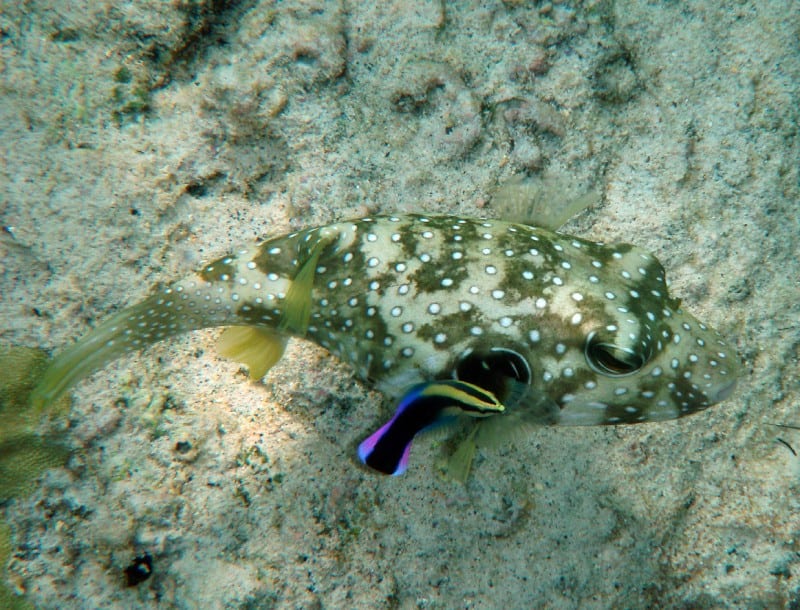
White Spotted Puffer Facts
- Most notably, the White Spotted Puffer constitutes a species of pufferfish endemic to a specific region. This remarkable species typically inhabits shallower regions of the ocean.
- It also follows a pattern of behavior typical of most types of pufferfish, along with a few others. That’s because this creature greatly inflates its body when threatened by predators.
- Further, the creature now holds the listing of a Threatened Species with the IUCN. This occurs primarily due to the effects of climate change and habitat loss caused by human activity.
- This particular species of fish also has a highly territorial nature. With its powerful beak, it often gives would be predators, or even simply wayward strangers, a somewhat nasty bite.
Related Articles
Hagfish Longfin Batfish Fangtooth
White Spotted Puffer Physical Description
Firstly, the rather interesting White Spotted Puffer ranks as a moderate sized species. That’s because it only attains an average length of about 18 in (45 cm). Further, it rarely weighs more than 4 lb (1.8 kg).
In addition, its typical coloring appears as a light gray except for the obvious exception of the white spots. The animal will also sometimes display darker gray lines radiating around the eyes.
Yet the underside often displays a much lighter color, sometimes almost white. In addition, the pectoral fin often appears ringed with a black circle. The combination makes for a rather striking appearance.
Finally, it also evolved a fascinating evolutionary advantage. As a result, this species developed the ability to move its eyes independently of each other. Quite naturally, this trait serves it well in its environment.
- Kingdom: Animalia
- Phylum: Chordata
- Class: Actinopterygii
- Order: Tetraodontiformes
- Family: Tetraodontidae
- Genus: Arothron
- Species: A. hispidus
Photographer: Hatem Moushir
CC License: https://bit.ly/2u410Z3
White Spotted Puffer Distribution, Habitat, and Ecology
First of all the truly amazing White Spotted Puffer evolved as solely endemic to a rather specific range. In its case, this area extends from the Indo-Pacific region to the eastern Pacific Ocean.
It also lives in the shallow regions of the ocean. Rarely does it appear at depths greater than 164 ft (50 m). Further, within this depth range, the adult members of the species most commonly prefers coral reefs and lagoons. Yet, juveniles also group in heavily weeded sections of estuaries, for protection.
Rather understandably, the animal feeds on a wide variety of prey. This includes numerous tunicates, corals, crabs, starfish, urchins, and krill. It also evolved as principally nocturnal in nature.
The White Spotted Puffer also ranks as extremely territorial, as well as highly solitary. When breeding, it typically makes its nests on the ocean floor. These nests remain well protected, but the larvae are planktonic and often float away from the nest in the ocean currents.
Species Sharing Its Range
Check out our other articles on Earth’s Geothermal Marvels, Mantis Shrimp, Erg Chebbi, Hoary Marmot, Icicle Mushroom, Olive Ridley Sea Turtle, Jewel Wasp, Mandarin Duck

